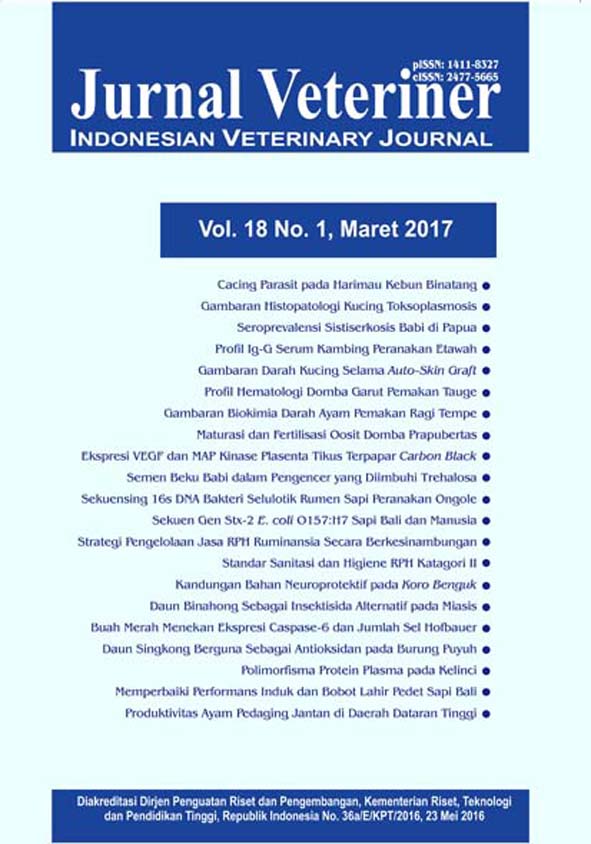Seroprevalensi Sistiserkosis pada Babi di Papua (SEROPREVALENCE OF PIG CYSTICERCOSIS IN PAPUA REGION)
Abstract
Pig cysticercosis is an infection caused by the larval stage of pork tapeworm and Papua is one of the largest endemic areas of cysticercosis in Indonesia. This survey aim was to determine the seroprevalence of pig cystisercosis in Papua. A total of 311 pig serum samples collected from six regencies in Papua were examined using Enzyme Linked Immunosorbent Assay (ELISA). The result of the survey showed that the average seroprevalence of pig cysticercosis in Papua was 23.5% (73/311), where the highest seroprevalence was found in the regency of Jayawijaya was 42.6% (43/101), Biak 22.5% (9/40), Nabire 20.6% (7/34), Mimika 17% (8/47), Jayapura 13.5% (5/37), and Merauke 1.9% (1/52). It can be concluded that the seroprevalence of pig cysticercosis in Papua is still high, therefore, it is necessary to do more intensive programs to prevent and control this disease.
ABSTRAK
Sistiserkosis pada babi adalah infeksi yang disebabkan oleh stadium larva cacing pita, dan Papua merupakan salah satu daerah endemis sistiserkosis di Indonesia. Tujuan penelitian ini adalah untuk menentukan seroprevalensi sistiserkosis pada babi di Papua. Sebanyak 311 sampel serum babi yang dikumpulkan dari enam kabupaten di Papua diuji dengan Enzyme Linked Immunosorbent Assay (ELISA). Hasil penelitian menunjukkan bahwa rataan seroprevalensi sistiserkosis pada babi di Papua sebesar 23,5% (73/311), dan seroprevalensi terbesar ditemukan di Kabupaten Jayawijaya 42,6% (43/101), Biak 22,5% (9/40), Nabire 20,6% (7/34), Mimika 17% (8/47), Jayapura 13,5% (5/37), dan Merauke 1,9% (1/52). Dapat disimpulkan bahwa seroprevalensi sistiserkosis pada babi di Papua masih tinggi, sehingga diperlukan program yang lebih intensif untuk mencegah dan mengontrol penyakit ini.



















